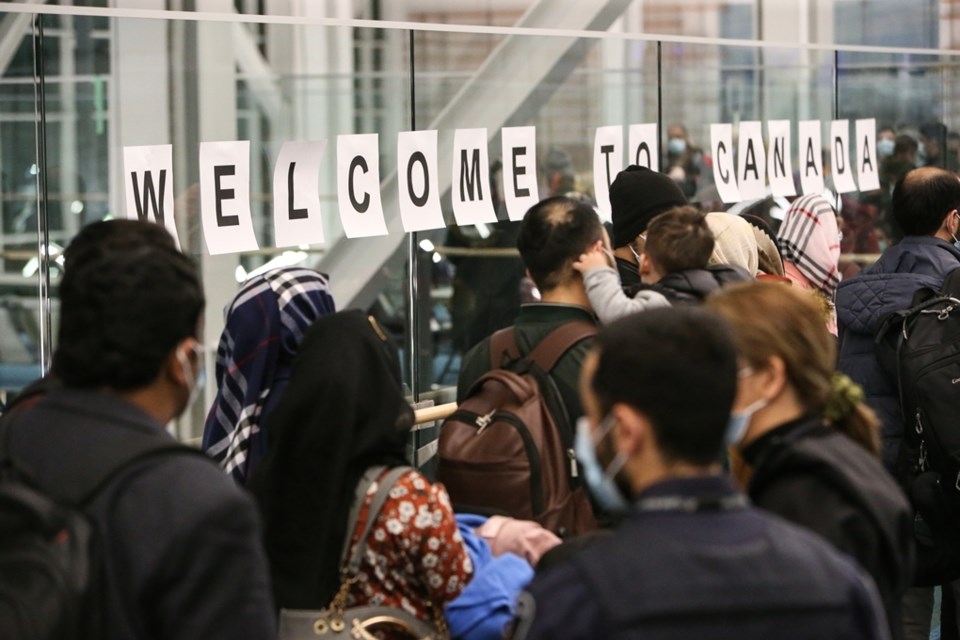The release of local population figures for 2023 confirmed our expectation that growth migrated back to the largest urban areas. Population growth in B.C.’s census metropolitan areas (CMAs) and census agglomerations (CAs) was robust between July 2022 and July 2023, driven largely by a surge in non-permanent residents. The combined population of the province’s CMAs increased by 3.6 per cent, the largest gain in at least 20 years, while total population in CAs increased by 1.3 per cent.
The 91原创 CMA was the fastest-growing area during the period with a population increase of 4.2 per cent. International newcomers, whether permanent or temporary, primarily settled in the largest urban markets. This represented a 119,650-person gain, and the strongest pace of growth since at least 2001-02. Victoria saw a 1.9-per-cent increase (8,059 people) in its population, a slowdown from a pace of 2.8 per cent in the prior period. Kelowna’s population grew by 2.9 per cent.
The mid-sized markets of Kamloops (2.6 per cent), Chilliwack (2.1 per cent) and Nanaimo (two per cent) all recorded notable growth.
Outside of the largest metro areas, B.C.’s top five fastest-growing CA were led by Squamish at 5.7 per cent—growth that followed an 8.2-per-cent increase from 2021 to 2022. This was followed by Prince George (2.1 per cent), Dawson Creek (2.5 per cent), Terrace (2.1 per cent) and Courtenay (1.6 per cent). This wide geographic span points to growth driven by those seeking more-affordable housing. By contrast, population levels slipped in Fort St. John, Quesnel and Nelson.
Growth was driven by an increase in net non-permanent residents. For example, net non-permanent residents in 91原创 reached 92,529 people in the 2022-23 period, compared to just over 24,000 in the prior period. That said, all other CMAs except for Abbotsford-Mission recorded fewer immigrants than the previous year. In 91原创, total immigrants arriving in the area amounted to 52,799 people—less than the 65,943 people registered in 2021-22. Abbotsford gained more than 3,000 immigrants, up from 2,918 immigrants.
While Metro 91原创 expanded, this masked an eastward flow of residents escaping the region’s low housing affordability. The 91原创 CMA saw its highest net loss to interprovincial migration in more than 20 years: A net loss of 4,795 people after recording a 10,892-person gain the previous year. The region also lost more people to other regions of B.C., for similar reasons.
As immigration policies change over the coming years—with one of the most recent being a national cap on international-student intake—population growth is likely to slow.
Meanwhile, in contrast to the national picture, B.C.’s inflation rate nudged higher in April. Headline consumer price inflation rose from 2.7 per cent to 2.9 per cent. Higher shelter and gasoline prices pushed the overall figure higher. Core inflation—which excludes food and energy prices—came in at 2.6 per cent, the same as the prior month.
Shelter prices remained elevated and were a key driver of inflation. The index rose 6.8 per cent in April, year-over-year. This was consistent with March, as rented and owned accommodation prices each rose by more than seven per cent. Monthly, prices for household operations, furnishings and equipment have trended higher since late 2023. Gasoline prices rose 8.4 per cent.
On a brighter note, growth in food prices continued decelerating in April. Food prices increased by 2.6 per cent compared to 3.6 per cent in March. This was the smallest gain since August 2021, and growth in food prices has slowed sharply since the start of 2023.
Goods prices rose by 0.5 per cent in April on a year-over-year basis for the second consecutive month. Prices of services went up by 4.7 per cent, moving higher than the 4.5-per-cent gain in March. Items related to recreation, education and reading posted a price increase of 1.9 per cent, while alcoholic beverages, tobacco products and recreational cannabis prices increased 2.2 per cent.
Bryan Yu is chief economist at Central 1.



